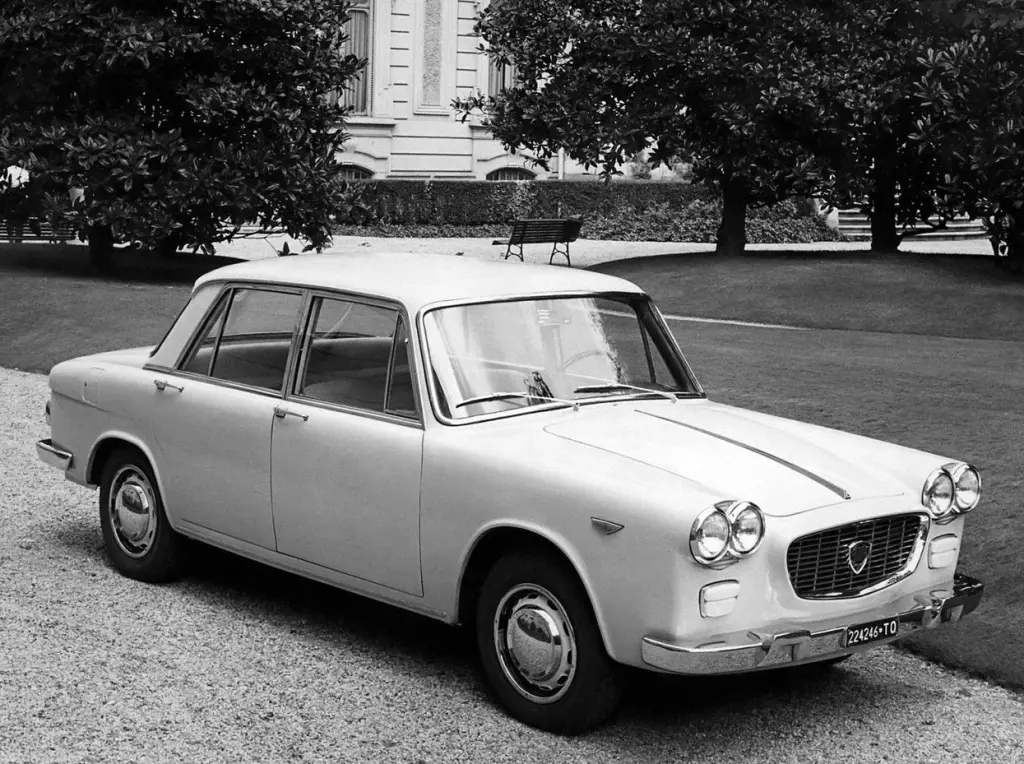FORGOTTEN HERO - THE LANCIA FLAVIA
05 January 2024
Quite simply, the Flavia was a crucial model in Lancia’s history - their first front-wheel-drive car. It is also hard to envisage how unusual a sight it would have been in the UK when it was new. Autocar described the Flavia as “a car for the connoisseur”, and Motor Sport regarded the Lancia not so much as a status symbol but as a:
very fine proposition for those who want individuality and refinement from a not-too-big car. At present the price in this country is inflated to £2,187 12s and even on the Common Market the basic price of £1,500 is high but, disregarding sordid finance, this is one of the World’s outstanding family cars.

“Sordid finance” meant the Flavia cost more than a Jaguar 3.8 Mk.2 and approximately twice the price of a Ford Zodiac Mk. II. The advertisements may have promised “Motoring at its Mostest”, but before calling Lancia Concessionaires Ltd. on HYDe Park 7166 to arrange a test drive, you might want to check your bank account first.
The narrative began when Carlo Pesenti, Lancia’s then-owner, instructed his Technical Director, Antonio Fessia, to create a new model to bridge the gulf between the Appia and the Flaminia. Power would be from a new 1.5-litre four-cylinder alloy ‘boxer’ unit - a ‘first’ for an Italian car - while Fessia believed the new model should have a FWD layout. His reasoning was that 62% of the Flavia’s weight needed to be above the front wheels to avoid torque steer and maximise traction.
The innovations did not cease at that point, for the engine, gearbox, differential, suspension and steering were fixed to a small frame anchored to the bodywork by elastic supports. This not only insulted the passengers from mechanical vibrations, it also made the Flavia easier to build. The specification further included dual hydraulic circuit all-disc braking – another ‘first’ for Lancia.
On the 3rd November 1960 the Flavia made its bow at the Turin Motor Show. At a price of 1,800,000 lire, it occupied a distinct niche in the Italian car market, more upmarket than the Fiat 1800/2100 and more discreet than the Alfa Romeo 2000 Berlina. Pietro Castagnero’s lines for the Flavia are best described as “restrained”, for well-heeled Italian drivers of the early 1960s often preferred low-key styling. Regarding export markets, it also stole a march on BMW, whose ‘Neue Klasse’ 1500 would not appear until 1961.
Inside, the Flavia’s cabin was smart and business-like, with a steering column lever for the four-speed all-synchromesh transmission. The front bench seat could recline to form a double bed while an intriguing row of switches was to the driver’s left. Nothing about the Lancia was flamboyant, for this was a car of quiet self-confidence - it wore the shield badge and was more than enough.
Subsequent Pininfarina, Vignale, and Zagato coupes and convertibles should not be allowed to overshadow the original Flavia Berlina. All subsequent FWD Lancias owe it a debt, and this writer’s goal is to compare one with a Citroën DS19. Above all, in its quiet way, the first Flavia was indeed a “a car of superlatives”.
